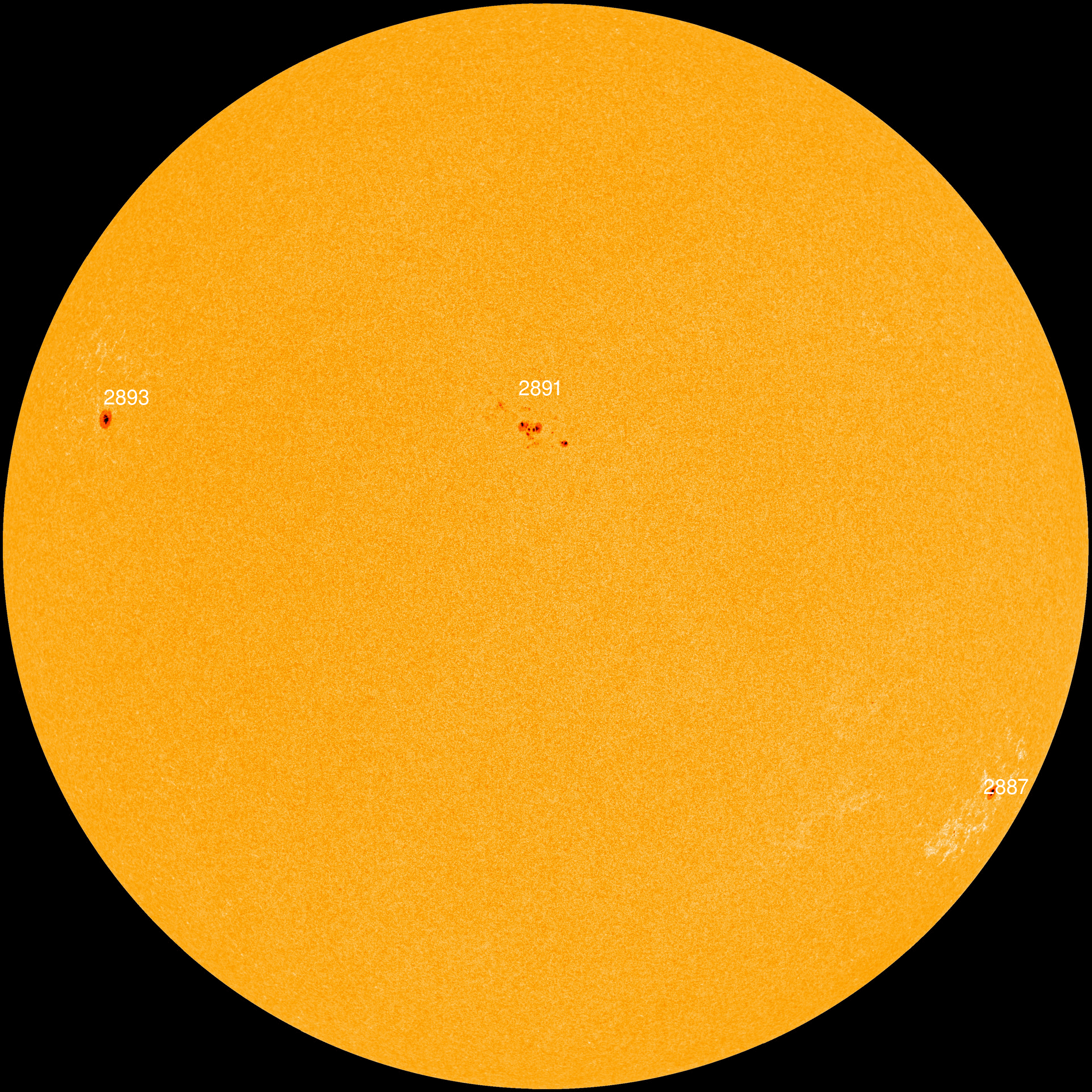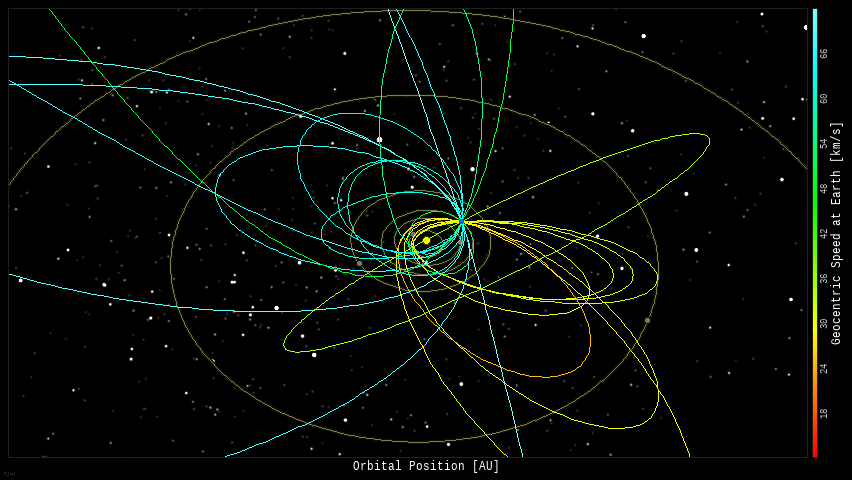Do you remember the very first time you saw the Moon and stars in the sky?
A lot of people have looked through my telescope – for many, it was their first time. For all of those people, the Moon and stars have been something they’ve know about their entire lives.
On Halloween 2021, I took my 20-month old granddaughter out at 6:00 AM in the morning, and showed her the Waning Crescent Moon, Sirius and the stars of Orion for the first time. She cooed softly and pointed to the Moon, and I saw her looking up at Sirius.
I’m not embarrassed to say that I went back inside and cried tears of joy. I hope this is the beginning of a wonderous and lifelong journey for Alayanora.
I was elected to the First Vice President position for the Warren Astronomical Society for 2022
The 1st VP is the board member who schedules speakers for meetings – this is very similar to what I did for the 2014 North American Science Fiction Convention (DETCON1) in Detroit. One of the best-attended panels I saw during that convention was a remote tour of the Vatican Observatory Meteorite Lab by Br. Guy; Br. Guy is well-known and liked in the SF community.
Speaking of DETCON1 – one panel that we scheduled for it had well over two dozen panelists wanting to be on it: “Anti-Science Sentiment in the U.S.” During last night’s meeting, I mentioned this as a topic for a panel discussion for a future W.A.S. meeting, and BOY was there a positive response! So… I guess I’ll be working on putting that discussion panel together!

After sunset all week: Jupiter and Saturn appear in the southern sky, and Venus appears in the southwestern sky. This is the first time in a while that I’ve been able to get all three planets in one image.

The Moon appears near Venus in the southwestern sky on Nov. 7th & 8th.
-

The Waxing Crescent Moon appears near Venus in the southwestern sky on Nov. 7th. Credit: Bob Trembley / Stellarium. -

The Waxing Crescent Moon appears near Venus in the southwestern sky on Nov. 8th. Credit: Bob Trembley / Stellarium.
Sirius, Aldebaran and the stars of Orion appear in the southwestern predawn sky – these are the stars my granddaughter saw for the first time last weekend.

The constellations Cassiopeia and Cepheus appear in the northwestern sky before sunrise all week.


- The Moon is a Waning Crescent – visible low to the east before sunrise.
- The New Moon occurs on Nov. 4th.
- After Nov. 4th, the Moon will be a Waxing Crescent – visible toward the southwest in early evening.

If you click on the Moon image above, or click this link, you will go to NASA’s Moon Phase and Libration, 2021 page – it will show you what the Moon looks like right now. If you click the image on that page, you will download a high-rez TIFF image annotated with the names of prominent features – helpful for logging your lunar observations!
Moon News

The Sun has 3 spots and is showing a LOT of activity!

Sunspot AR2891 is pointed directly at the Earth, and is blowing long-duration M1-class solar flares!
Videos courtesy of NASA/SDO and the AIA, EVE, and HMI science teams.
You can view the Sun in near real-time, in multiple frequencies here: SDO-The Sun Now.
You can create your own time-lapse movies of the Sun here: AIA/HMI Browse Data.
You can browse all the SDO images of the Sun from 2010 to the present here: Browse SDO archive.
Solar Sketching

Solar Corona
Solar wind speed is 592.9 km/sec ▲ with a density of 8.2 protons/cm3 ▲ at 1500 UT.
Click here to see a near real-time animation of the corona and solar wind from the Solar & Heliospheric Observatory (SOHO).
Sun News:

- Near-Earth Objects (NEOs) discovered this month: 0, this year: 2504 (+131), all time: 27,336 (+131)
- Potentially Hazardous Asteroids (PHAs): 2223 (+4 updated 2021-11-02)
- Total Minor Planets discovered (NASA): 1,113,527 (updated 2021-08-17) – not updated for many weeks.
- Total Minor Planets discovered (MPC): 1,130,196 (-14, updated 2021-11-02)
Upcoming Earth-asteroid encounters:
| Asteroid | Date(UT) | Miss Distance | Velocity (km/s) | Diameter (m) |
| 2009 WY7 | 2021-Nov-02 | 19.2 LD | 14.7 | 54 |
| 2021 TJ14 | 2021-Nov-02 | 18.9 LD | 9.7 | 43 |
| 2017 TS3 | 2021-Nov-02 | 13.9 LD | 9.9 | 131 |
| 2021 UG6 | 2021-Nov-02 | 7.1 LD | 10.1 | 16 |
| 2021 UZ2 | 2021-Nov-02 | 2.2 LD | 11.1 | 18 |
| 2021 UE4 | 2021-Nov-03 | 3.1 LD | 10.9 | 13 |
| 2021 UW3 | 2021-Nov-03 | 5.8 LD | 5.4 | 10 |
| 2021 UX5 | 2021-Nov-03 | 1.8 LD | 12.4 | 7 |
| 2021 US6 | 2021-Nov-03 | 1.2 LD | 21.4 | 8 |
| 2021 US1 | 2021-Nov-03 | 1.9 LD | 3.2 | 9 |
| 2021 UD1 | 2021-Nov-04 | 16.1 LD | 8 | 27 |
| 2005 VL1 | 2021-Nov-04 | 17 LD | 5.2 | 18 |
| 2021 UV3 | 2021-Nov-04 | 13.5 LD | 5.7 | 20 |
| 2021 UL5 | 2021-Nov-05 | 2.7 LD | 18.5 | 19 |
| 2021 UU1 | 2021-Nov-05 | 1.8 LD | 9.3 | 18 |
| 2021 UF1 | 2021-Nov-06 | 14.7 LD | 10.5 | 35 |
| 2020 KA | 2021-Nov-06 | 14.9 LD | 4.8 | 11 |
| 2021 UF4 | 2021-Nov-07 | 4.1 LD | 6.3 | 15 |
| 2021 UG4 | 2021-Nov-07 | 17.3 LD | 9 | 24 |
| 2021 SP3 | 2021-Nov-08 | 15.6 LD | 9.3 | 70 |
| 2021 UB3 | 2021-Nov-08 | 9.1 LD | 5.9 | 14 |
| 2021 US5 | 2021-Nov-09 | 13.8 LD | 13.7 | 22 |
| 2019 XS | 2021-Nov-09 | 1.5 LD | 10.7 | 65 |
| 2017 WG14 | 2021-Nov-10 | 18.6 LD | 11.6 | 45 |
| 2021 UA5 | 2021-Nov-11 | 11.2 LD | 9.3 | 27 |
| 2007 VD138 | 2021-Nov-12 | 16 LD | 7.7 | 44 |
| 2004 UE | 2021-Nov-13 | 11.1 LD | 13.2 | 224 |
| 2021 UO3 | 2021-Nov-13 | 4.6 LD | 6.6 | 17 |
| 2016 VR | 2021-Nov-15 | 8.2 LD | 8.7 | 20 |
| 2010 VK139 | 2021-Nov-15 | 6.4 LD | 13.9 | 65 |
| 2019 VL5 | 2021-Nov-15 | 8.5 LD | 8.1 | 23 |
| 2016 JG12 | 2021-Nov-20 | 14.4 LD | 7.5 | 112 |
| 2021 TR15 | 2021-Nov-20 | 11.9 LD | 7 | 41 |
| 2021 KH2 | 2021-Nov-21 | 19.3 LD | 6.5 | 31 |
| 3361 | 2021-Nov-21 | 15.1 LD | 8.1 | 511 |
| 2014 WF201 | 2021-Nov-24 | 13.2 LD | 5.5 | 27 |
| 2009 WB105 | 2021-Nov-25 | 15.1 LD | 18.9 | 71 |
| 2019 BB5 | 2021-Nov-25 | 18.8 LD | 8.3 | 16 |
| 1994 WR12 | 2021-Nov-29 | 16.1 LD | 8.8 | 123 |
| 2021 UP4 | 2021-Dec-04 | 14 LD | 8.3 | 52 |
| 4660 | 2021-Dec-11 | 10.3 LD | 6.6 | 774 |
| 2019 XQ1 | 2021-Dec-13 | 14.1 LD | 9.1 | 30 |
| 2004 YC | 2021-Dec-15 | 18.4 LD | 8.1 | 27 |
| 163899 | 2021-Dec-17 | 14.2 LD | 5.6 | 1083 |
| 2021 LX3 | 2021-Dec-18 | 19.7 LD | 6.5 | 124 |
| 2016 YY10 | 2021-Dec-21 | 11.3 LD | 9.2 | 23 |
| 2017 XQ60 | 2021-Dec-21 | 13.7 LD | 15.7 | 47 |
| 2016 TR54 | 2021-Dec-24 | 16.9 LD | 15.5 | 135 |
| 2018 AH | 2021-Dec-27 | 11.9 LD | 12.7 | 112 |
| 2017 AE3 | 2021-Dec-29 | 9.3 LD | 19.1 | 155 |
Asteroid News:

On November 1, 2021, the NASA All Sky Fireball Network reported 21 fireballs!
(12 sporadics, 4 Orionids, 4 northern Taurids, 1 omicron Eridanid)

Fireball News:
If you see a bright meteor or a fireball, please REPORT IT to the American Meteor Society and the International Meteor Organization!

Position of the planets & several spacecraft in the inner solar system on November 1st:

Position of the planets in the middle solar system:

Position of the planets in the outer solar system:

Solar System News

See a list of current NASA missions here: https://www.jpl.nasa.gov/missions?mission_status=current

ex·o·plan·et /ˈeksōˌplanət/, noun: a planet orbiting a star other than the Sun.
Data from the NASA Exoplanet Archive
* Confirmed Planets Discovered by TESS refers to the number planets that have been published in the refereed astronomical literature.
* TESS Project Candidates refers to the total number of transit-like events that appear to be astrophysical in origin, including false positives as identified by the TESS Project.
* TESS Project Candidates Yet To Be Confirmed refers to the number of TESS Project Candidates that have not yet been dispositioned as a Confirmed Planet or False Positive.
Exoplanet News:

SpaceWeather.com Realtime Aurora Gallery: https://spaceweathergallery.com/aurora_gallery.html

Bisei Town, Japan, is now certified as an International Dark Sky Community
- Visit an International Dark Sky Park: https://www.darksky.org/our-work/conservation/idsp/parks/
- If you live in Michigan, visit the Michigan Dark Skies site: https://sites.lsa.umich.edu/darkskies/

Education and STEM
Hubble – Beautiful Universe: M51

“The Whirlpool Galaxy, also known as Messier 51a, M51a, and NGC 5194, is an interacting grand-design spiral galaxy with a Seyfert 2 active galactic nucleus. It lies in the constellation Canes Venatici, and was the first galaxy to be classified as a spiral galaxy. Its distance is estimated to be 31 million light-years away from Earth.
The galaxy and its companion, NGC 5195, are easily observed by amateur astronomers, and the two galaxies may be seen with binoculars. The Whirlpool Galaxy has been extensively observed by professional astronomers, who study it to understand galaxy structure (particularly structure associated with the spiral arms) and galaxy interactions.” – Wikipedia.
“The graceful, winding arms of the majestic spiral galaxy M51 appear like a grand spiral staircase sweeping through space. They are actually long lanes of stars and gas laced with dust. Such striking arms are a hallmark of so-called grand-design spiral galaxies. In M51, also known as the Whirlpool galaxy, these arms serve an important purpose: they are star-formation factories, compressing hydrogen gas and creating clusters of new stars.
Some astronomers think that the Whirlpool’s arms are particularly prominent because of the effects of a close encounter with NGC 5195, the small, yellowish galaxy at the outermost tip of one of the arms. The compact galaxy appears to be tugging on the arm, the tidal forces from which trigger new star formation. Hubble’s clear view shows that NGC 5195 is passing behind M51. The small galaxy has been gliding past the Whirlpool for hundreds of millions of years.” – NASA
I’ve seen countless images of M51, but I’ve never see the halo around the two galaxies as well as they are shown in this image!
Software Apps used for this post:
NASA Eyes on the Solar System: an immersive 3D solar system and space mission simulator – free for the PC /MAC.
Stellarium: a free open source planetarium app for PC/MAC/Linux. It’s a great tool for planning observing sessions. A web-based version of Stellarium is also available.





